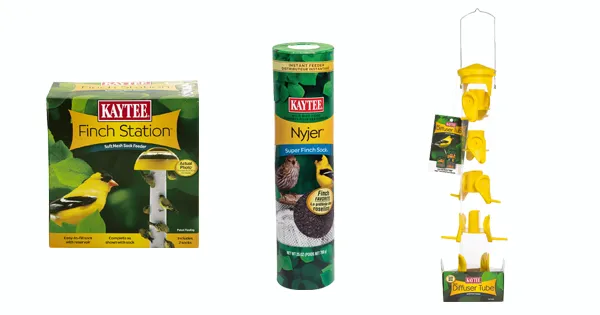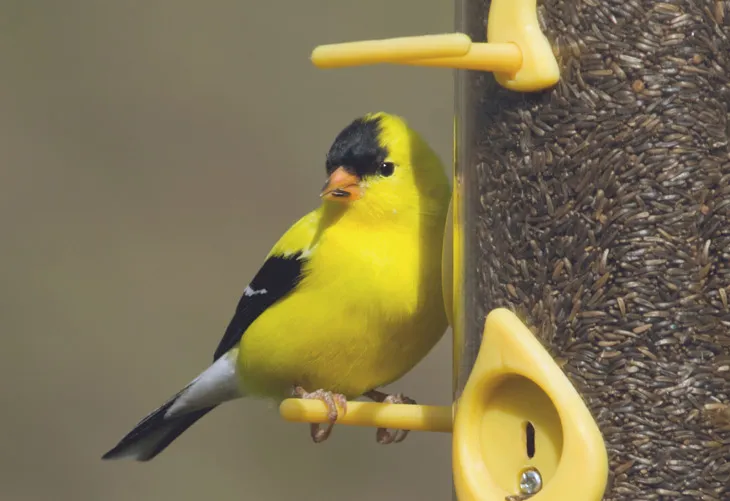Bright yellow American goldfinches are a backyard favorite, captivating birdwatchers with their vibrant plumage and lively antics. Alongside species like house finches and purple finches, these small birds thrive across North America and can visit feeders throughout the year. While they molt into duller green or gray feathers in winter, attracting finches to your yard doesn’t require seasonal migration knowledge—just the right strategies. Whether you’re a beginner birder or seasoned enthusiast, these expert tips on how to attract finches will turn your space into a feathered hotspot. For more on supporting wild birds, check out our guide on a healthy bird diet.
Finches, especially American goldfinches, prefer specific feeders, seeds, and habitats. By mimicking their natural preferences, you create an inviting environment that keeps them returning. Bird experts emphasize combining feeders, food, and landscaping for the best results, drawing in flocks reliably.
Choose the Ideal Bird Feeders for Finches
Finches are petite and agile, so they excel with feeders that suit their size and feeding style. Tube feeders with small ports, mesh socks, and specialized finch stations work best, allowing easy access while deterring larger birds like squirrels or grackles.
 Various bird feeders designed for attracting wild finches including tube and sock styles
Various bird feeders designed for attracting wild finches including tube and sock styles
Opt for nyjer (thistle) tube feeders or sock feeders, as finches cling effortlessly to the soft mesh. These designs hold tiny seeds without spilling, reducing waste and keeping the area clean. Hang multiple feeders at varying heights—some in open areas for safety spotting, others near cover for quick escapes. Clean them weekly with a mild bleach solution to prevent mold, ensuring a healthy feeding spot. In my experience observing backyard flocks, starting with two feeders spaced 10-15 feet apart prevents territorial squabbles and attracts more birds faster.
Place feeders near but not under trees or shrubs, offering protective perches without ambush risks from predators. This setup has proven effective year-round, even in winter when finches seek reliable food sources amid scarce natural seeds.
Select the Best Seeds to Draw Finches In
Diet is crucial for attracting finches—they’re granivores, favoring oily, small seeds that match their cone-shaped beaks. Nyjer seed (also called thistle) tops the list, providing high-energy nutrition packed with fats for endurance. Black oil sunflower seeds are another hit, with thin shells that finches crack open easily.
 Colorful finches feeding on seeds from a backyard feeder
Colorful finches feeding on seeds from a backyard feeder
Finch-specific blends combining nyjer, sunflower chips, and millet mimic wild foraging, appealing to American goldfinches, pine siskins, purple finches, and lesser goldfinches. Avoid cheap mixed seeds with fillers like milo, as finches ignore them, leading to spoilage. Freshness matters: Buy in small quantities and store in airtight containers to preserve oils.
For variety, offer sunflower hearts or chips alongside nyjer—these protein-rich options support molting and breeding. According to avian nutritionists, a diet exceeding 40% oil content boosts finch health and flock size. If you’re feeding small parrots or similar birds, explore tailored options like food for parrotlets for comparable seed insights.
Refresh feeders daily during peak seasons (spring breeding and fall migration) to maintain appeal. Watch for patterns: Goldfinches often arrive in family groups, signaling your setup’s success.
Build a Finch-Friendly Yard Environment
Beyond feeders and seeds, landscaping seals the deal for how to attract finches long-term. Finches favor open, grassy areas resembling meadows, so maintain patches of native grasses and weeds. Plant seed-producing species like coneflowers, sunflowers, cosmos, and especially thistle—goldfinches devour seeds and weave thistle down into nests.
 Native plants and water feature in a backyard designed to attract finches
Native plants and water feature in a backyard designed to attract finches
Incorporate milkweed, cattails, and cottonwood for fluff used in nesting. These perennials provide natural food, reducing feeder reliance while enhancing biodiversity. Water is non-negotiable: Install a shallow birdbath with a dripper or mister for year-round hydration. In winter, use a heated basin to prevent freezing, aiding resident finches.
Avoid pesticides, as they contaminate seeds and harm insects finches occasionally eat. Companion planting with healthy diet for african grey parrot favorites like sunflowers overlaps nicely here. Patience pays off—new setups may take 1-2 weeks, but established yards host dozens daily.
For broader avian nutrition, see our best diet for Indian ringneck recommendations, adaptable to finch-like species.
Final Tips for Success and Finch Watching
Attracting finches combines targeted feeders, premium seeds, and habitat enhancements for vibrant year-round visitors. Monitor for signs of success: Undisturbed seed levels and cheerful chirps mean you’re on track. Consult local Audubon chapters for region-specific plants, and rotate seed types seasonally to sustain interest.
Ready to welcome goldfinches? Start small, observe, and adjust. Your backyard could soon buzz with these delightful birds. Explore more bird care tips like best food for cockatoo for expanding your feathered friends.
